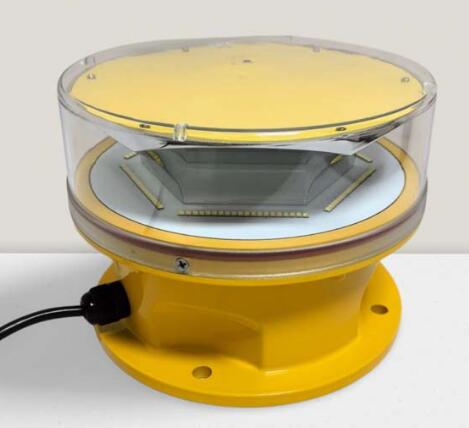LED Aircraft Warning Lights: Enhancing Aviation Safety with Advanced Technology
Aviation safety relies on numerous technologies working in harmony, and LED aircraft warning lights play a crucial role in preventing collisions and ensuring visibility. These lights are installed on tall structures such as communication towers, wind turbines, and skyscrapers to alert pilots of potential obstacles. With the shift from traditional incandescent lighting to LED-based solutions, the aviation industry has seen significant improvements in reliability, energy efficiency, and maintenance costs.
This article explores the importance of LED aircraft warning lights, their advantages over conventional lighting, and their role in modern aviation safety systems.
Why LED Aircraft Warning Lights Are Essential
Pilots rely on visual cues to navigate safely, especially during low-visibility conditions. LED aircraft warning lights serve as critical markers, helping pilots identify tall structures from a distance. These lights are mandated by aviation authorities worldwide to minimize the risk of collisions, particularly near airports and flight paths.
Unlike older lighting technologies, LED aircraft warning lights provide superior brightness and clarity, ensuring they remain visible even in adverse weather conditions such as fog, rain, or snow. Their ability to emit intense, focused light makes them indispensable for modern aviation safety.
Advantages of LED Technology in Aviation Lighting
1. Energy Efficiency and Longevity
One of the most significant benefits of LED aircraft warning lights is their energy efficiency. LEDs consume significantly less power than traditional incandescent or halogen lights, reducing operational costs. Additionally, LEDs have an extended lifespan, often exceeding 50,000 hours of operation. This longevity minimizes the need for frequent replacements, which is particularly advantageous for lights installed on remote or hard-to-access structures.
2. Enhanced Visibility and Reliability
LED aircraft warning lights produce a high-intensity beam that remains consistent over time. Unlike older technologies that degrade in brightness, LEDs maintain their luminosity, ensuring continuous compliance with aviation regulations. Their ability to emit light in specific wavelengths also enhances visibility against various backgrounds, including urban light pollution.

3. Durability in Harsh Environments
Aviation warning lights are exposed to extreme weather conditions, from scorching heat to freezing temperatures. LED aircraft warning lights are designed to withstand these challenges, featuring robust housings that resist corrosion, UV radiation, and moisture. This durability ensures uninterrupted operation, reducing the risk of light failure.
4. Smart Control and Automation
Modern LED aircraft warning lights often incorporate smart control systems, allowing for remote monitoring and adjustments. Some models feature automatic brightness adjustment based on ambient light conditions, further optimizing energy usage. Integration with IoT-based aviation safety systems enables real-time diagnostics, ensuring immediate maintenance if an issue arises.
| led aircraft warning lights |
Regulatory Compliance and Standards
To ensure uniformity and effectiveness, LED aircraft warning lights must comply with international aviation standards set by organizations such as the Federal Aviation Administration (FAA) and the International Civil Aviation Organization (ICAO). These regulations define parameters such as light intensity, flash patterns, and color specifications (typically red or white).
Red Obstruction Lights: Used for nighttime visibility on structures below a certain height.
White Strobe Lights: Employed for daytime and twilight visibility on taller structures.
Dual Lighting Systems: Combine red and white lights for optimal visibility in all conditions.
| led aircraft warning light |
Compliance with these standards ensures that LED aircraft warning lights provide consistent and reliable warnings to pilots worldwide.
Applications Beyond Traditional Aviation
While primarily used for aviation safety, LED aircraft warning lights have found applications in other industries:
Wind Energy: Wind turbines, often located in remote areas, require high-visibility lighting to prevent collisions with low-flying aircraft.
Telecommunications: Cell towers and broadcast antennas use these lights to comply with aviation safety regulations.
Urban Infrastructure: Skyscrapers and bridges integrate LED aircraft warning lights to enhance safety in densely populated areas.
Future Trends in LED Aviation Lighting
As technology advances, LED aircraft warning lights are expected to become even more efficient and intelligent. Emerging trends include:
Solar-Powered LED Lights: Reducing dependency on grid electricity, especially in remote locations.
Adaptive Lighting Systems: Using AI to adjust light intensity based on real-time aircraft proximity.
Enhanced Connectivity: Integration with air traffic control systems for dynamic obstacle warnings.
LED aircraft warning lights represent a vital advancement in aviation safety, offering unmatched efficiency, durability, and visibility. As air traffic continues to grow, the demand for reliable and low-maintenance lighting solutions will only increase. By adopting LED-based technologies, the aviation industry ensures safer skies while reducing environmental impact and operational costs.
From towering skyscrapers to sprawling wind farms, LED aircraft warning lights illuminate the path to safer aviation, proving that even the smallest lights can have a monumental impact on global safety.
